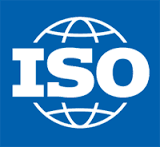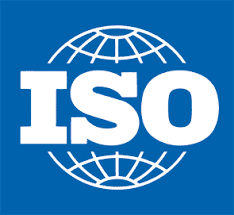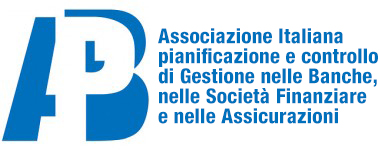
da Maineri Bruno | Feb 12, 2017 | ISO
Over 6300 people die each day from work-related accidents or diseases – that’s nearly 2.3million every year.
The burden of occupational injuries and diseases is significant, both for employers and the wider economy, resulting in losses from early retirements, staff absence and rising insurance premiums.
To combat the problem, ISO is developing a new standard, ISO 45001 Occupational health and safety management systems – Requirements, that will help organizations reduce this burden by providing a framework to improve employee safety, reduce workplace risks and create better, safer working conditions, all over the world.
The standard is currently being developed by a committee of occupational health and safety experts, and will follow other generic management system approaches such as ISO 14001 and ISO 9001. It will take into account other International Standards in this area such as OHSAS 18001, the International Labour Organization’s ILO-OSH Guidelines, various national standards and the ILO’s international labour standards and conventionsOver 6300 people die each day from work-related accidents or diseases – that’s nearly 2.3million every year.
The burden of occupational injuries and diseases is significant, both for employers and the wider economy, resulting in losses from early retirements, staff absence and rising insurance premiums.
To combat the problem, ISO is developing a new standard, ISO 45001 Occupational health and safety management systems – Requirements, that will help organizations reduce this burden by providing a framework to improve employee safety, reduce workplace risks and create better, safer working conditions, all over the world.
The standard is currently being developed by a committee of occupational health and safety experts, and will follow other generic management system approaches such as ISO 14001 and ISO 9001. It will take into account other International Standards in this area such as OHSAS 18001, the International Labour Organization’s ILO-OSH Guidelines, various national standards and the ILO’s international labour standards and conventions.
Who is it for?
ISO 45001 is intended for use by any organization, regardless of its size or the nature of its work, and can be integrated into other health and safety programmes such as worker wellness and wellbeing. It also addresses many, if not all, legal requirements in this area.
When will it be available?
The drafts will be available through your local ISO member once it reaches the public enquiry (DIS) stage and Final Draft (FDIS) stage, before the standard is published in December 2017. Learn more about the stages of standards development.
Where can I find out more?
Watch this space for further updates about the standard’s progress or contact your national ISO member.
*source: International Labour Organisation

da Maineri Bruno | Feb 10, 2017 | ISO, Anticorruzione
Nell’ottobre 2016 l’ISO ha pubblicato la norma ISO 37001:2016 | Anti-bribery management systems.
Dal momento che la corruzione è un fenomeno che interessa quasi tutto il mondo ed incide pesantemente sullo sviluppo economico, l’interesse per questa norma è notevole.
Riportiamo qui interventi su questo argomento nell’intento di aiutare chi è interessato a comprendere la filosofia della Norma e le sue possibilità applicative.
Ricordiamo che l’Eni è stata la prima società italiana a ricevere il certificato di conformità alla norma ISO 37001:2016 “Antibribery Management Systems” che definisce per la prima volta, uno standard internazionale sui sistemi di gestione anti-corruzione.
- Nel suo sito l’ISO pubblica una Guida alla Norma e una serie di slide che illustrano le caratteristiche della 37001
- Leslie Benton (Vice President of Advocacy and Stakeholder Engagement, CREATE.org) nel blog di Navex Global su Ethics & Compliance Matters pubblica le risposte alle 5 domande più frequenti sulla 37001 Let’s Talk Specifics
- Nel blog di Navex Global su Ethics & Compliance Matters è pubblicata anche una Check list per la valutazione del rischio corruzione
- Il sito di Assocontroller pubblica una presentazione di Adarosa Ruffini tenutasi presso il Centro Formazione UNI sulla Norma UNI ISO 37001

da Maineri Bruno | Ott 15, 2016 | ISO, Anticorruzione
ISO publishes powerful new tool to combat bribery
by Elizabeth Gasiorowski-Denis on 14 October 2016
ISO News feeds (RSS)
A new business tool designed to fight bribery is now published. ISO 37001 is the first international anti-bribery management system standard designed to help organizations combat bribery risk in their own operations and throughout their global value chains. It has the potential to reduce corporate risk and costs related to bribery by providing a manageable business framework for preventing, detecting and addressing bribery.
“Bribery is a significant business risk in many countries and sectors,” says Neill Stansbury, Chair of ISO project committee ISO/PC 278 responsible for the new standard. “In many cases, it has been tolerated as a ‘necessary’ part of doing business. However, increasing awareness of the damage caused by bribery to countries, organizations and individuals has resulted in calls for effective action to be taken to prevent bribery.”
Many organizations have already invested significant time and resources into developing internal systems and processes for preventing bribery. ISO 37001:2016, Anti-bribery management systems – Requirements with guidance for use, is designed to support and broaden those efforts, while providing transparency and clarity on the measures and controls that organizations should be putting in place and how to implement them most effectively and efficiently.
ISO 37001 will help prevent, detect and deal with bribery, whether such bribery is by or on behalf of an organization or its employees or business associates. Using a series of related measures and controls, including supporting guidance, the anti-bribery management system specifies requirements for:
An anti-bribery policy and procedures
Top management leadership, commitment and responsibility
Oversight by a compliance manager or function
Anti-bribery training
Risk assessments and due diligence on projects and business associates
Financial, procurement, commercial and contractual controls
Reporting, monitoring, investigation, and review
Corrective action and continual improvement
Stansbury says that ISO 37001 has been developed to ensure flexible use by organizations of all sizes, wherever they may do business. “The bribery risk facing an organization varies according to factors such as the size of the organization, the countries and sectors in which the organization operates, and the nature, scale and complexity of the organization’s operations. Therefore, ISO 37001 specifies the implementation by the organization of reasonable and proportionate policies, procedures and controls.”
Organizations may choose to be certified to ISO 37001 by accredited third parties, to confirm that their anti-bribery management system meets the standard’s criteria. Although certification (or compliance) to ISO 37001 cannot provide assurance that no bribery has occurred or will take place in relation to an organization, the standard can help establish that the organization has implemented all appropriate measures designed to prevent bribery.
ISO 37001 builds on guidance from various organizations, such as the International Chamber of Commerce, the Organisation for Economic Cooperation and Development, Transparency International and various governments, representing a global consensus on anti-bribery good practices. It was developed by ISO project committee ISO/PC 278, Anti-bribery management systems, whose secretariat is held by BSI, the ISO member for the United Kingdom.
Ulteriori informazioni sulla norma


